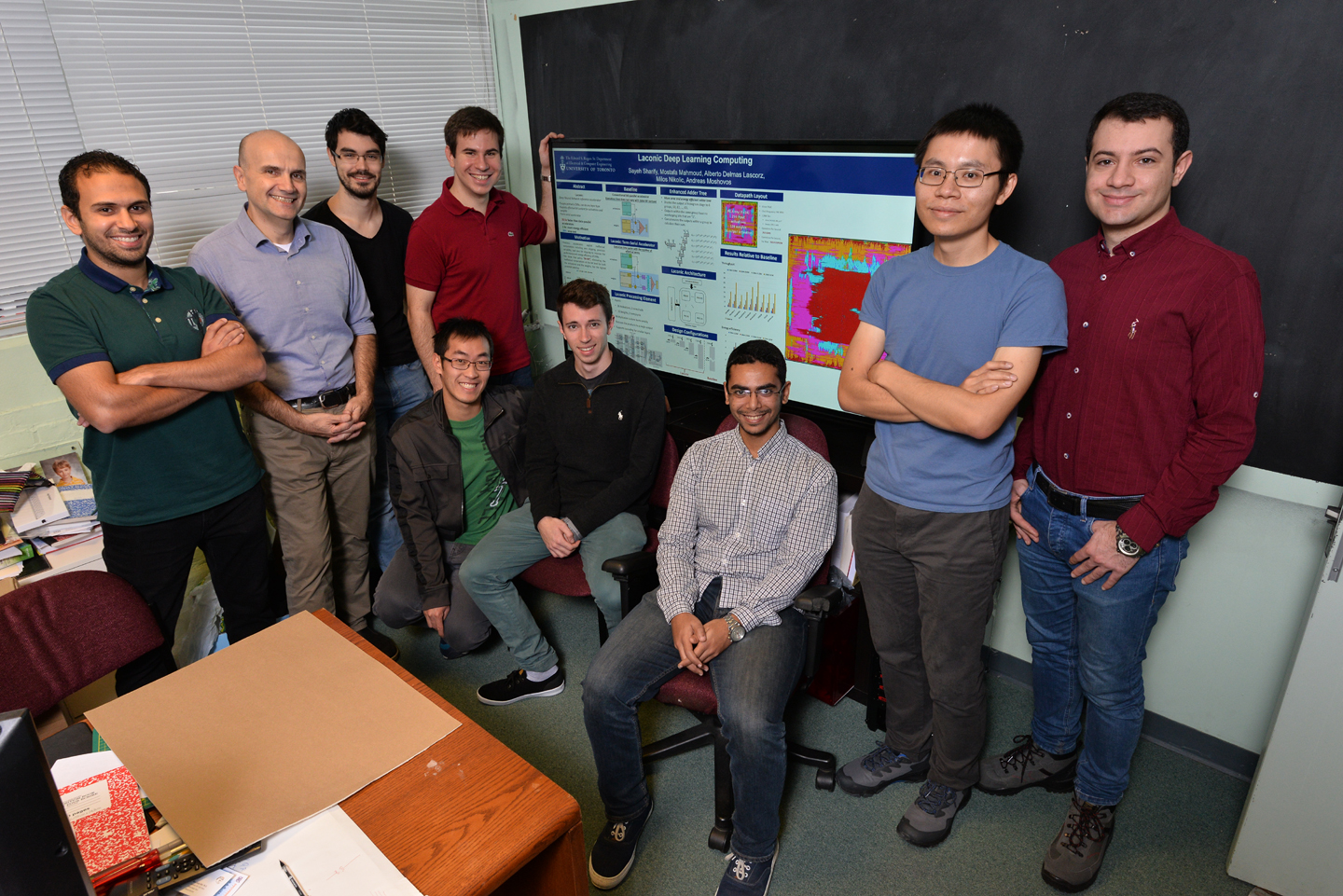On the cutting edge of machine learning, Andreas Moshovos is designing sophisticated hardware for increasingly specialized specifications.
“Any time there is communication that is critical for some reason—speed, accuracy, energy efficiency—anything that is specialized can give you an edge,” says Moshovos, who is a professor in the University of Toronto’s Department of Electrical and Computer Engineering.
Moshovos has spent much of his career optimizing different types of computing hardware, but he regards the field of deep learning as his greatest challenge so far. It is driving the ability of computers to “do the math” that enables them to process vastly greater amounts of increasingly complex information—including inputs from many different physical sensors (for example, those found in autonomous vehicles.) Such systems become capable of using previous calculations to determine how to handle incoming data—in effect benefiting from their own experience.
In order to facilitate this kind of learning process, however, the hardware must be as efficient as possible, so that it can sift calculations in order to favour those that provide expected outcomes. Moshovos and his colleagues are creating these sophisticated products with the assistance of CMC Microsystems, which provides them with essential software for designing such custom hardware.
“It’s extremely difficult for researchers to get access to this kind of software tools,” he notes, because such resources are usually found only within the proprietary confines of industry. “I would not be able to do the work that I do without access to these technologies. I would only be able to get it to some point but then not be able to take the next step—publicizing it and convincing people that it has legs. You can only do so much without building a prototype.”
This ability to maintain the momentum of machine learning research, with CMC’s assistance, has had a significant ripple effect: Moshovos now leads a new Canada-wide network, the NSERC Strategic Partnership Network on COmputing Hardware for Emerging Intelligent Sensing Applications (COHESA). Comprising 19 leading researchers in the field at seven universities, and several industrial partners, the group is focusing on enabling machine learning at new levels of functionality akin to human capabilities, such as hearing, seeing, or reading.
“We’re fortunate because U of T as well as other Canadian universities were at the forefront of this innovation,” he says. “We realized that we weren’t going to get what we could get out of this technology with commodity hardware. It was a good opportunity to put our collective experience to great use.”
‘You can only do so much without building a prototype’
NSERC COHESA doesn’t just tap into the considerable bench strength of its researchers; it also leverages its various members’ connections with industry, including multinationals such as AMD, Google, Huawei, Intel and Qualcomm. While industrial partners tend to have highly practical, immediate interests in machine learning technology, the network has been able to introduce these enterprises to the prospects found in the most advanced work being done at universities across the country.
The network is also building Canada’s next generation of innovators, providing training opportunities for tens of graduate students and postdoctoral fellows in the COHESA researchers’ labs.
This complementarity has been a satisfying outcome of developing this network, Moshovos says. “I knew there were a lot of exceptional people in Canada and this was an opportunity to bring a lot of them together,” he says. “It also built the foundation for stronger relationships. I wish we could expand even further, as our country has a tremendous talent in this area.”
Photo: Rodney Daw/Photo Features
January 2019

